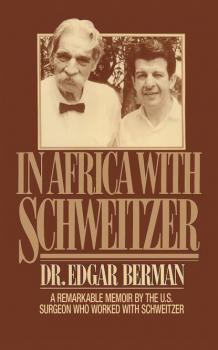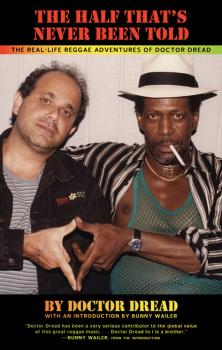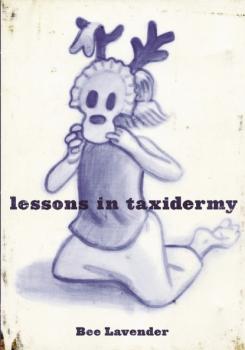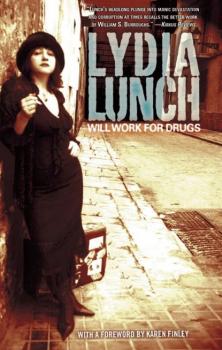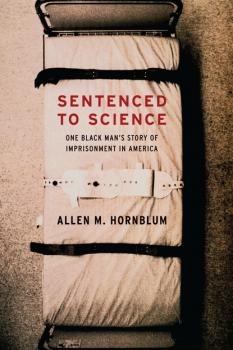ТОП просматриваемых книг сайта:
Биографии и Мемуары
Различные книги в жанре Биографии и Мемуары, доступные для чтения и скачиванияАннотация
"If my life and experience is of some interest, it is chiefly so because I have lived through interesting times, in an interesting country, traveled to many interesting places, and been accompanied along the way by interesting folk."
John de Gruchy is a renowned South African theologian and an inspiration to many. An expert on the work of the anti-Nazi theologian Dietrich Bonhoeffer, De Gruchy is also a local struggle icon in his own right. In this book, we trace his story from his Viking ancestry, via a seafaring grandfather and illegitimate grandmother, to where he became an ecumenical activist for the South African Council of Churches and up to the present. We journey through a South Africa in transition and a rapidly changing global society. Along the way we meet varied, often controversial people, like Albert Luthuli, Jaap Durand, P.W. Botha and Constand Viljoen. With a foreword by his friend Desmond Tutu, this is the tale of an extraordinary life lived to the full.
John de Gruchy is a renowned South African theologian and an inspiration to many. An expert on the work of the anti-Nazi theologian Dietrich Bonhoeffer, De Gruchy is also a local struggle icon in his own right. In this book, we trace his story from his Viking ancestry, via a seafaring grandfather and illegitimate grandmother, to where he became an ecumenical activist for the South African Council of Churches and up to the present. We journey through a South Africa in transition and a rapidly changing global society. Along the way we meet varied, often controversial people, like Albert Luthuli, Jaap Durand, P.W. Botha and Constand Viljoen. With a foreword by his friend Desmond Tutu, this is the tale of an extraordinary life lived to the full.
Аннотация
Dr. Edgar Berman was In Africa with Schweitzer as a member of the venerated doctor's surgical team in Lambarene. There, he was about to delve into Schweitzer's psyche, his personality, his rationale. He would ask and answer: why would a world famous physician maroon himself in the jungles of Africa: Why would an intellectual with doctorates in four disciplines choose a primitive, isolated life?Albert Schweitzer was feared, held in awe, placed on a pedestal and derided. Dr. Berman's diary, the germ of this remarkable account, was painstakingly written over months of living with Schweitzer, eating with him, listensing to his music, learning his philosophy and working with him in the nearby prehistoric operating room, an aging arena where all life was sacred. Berman provides us with a moving, in-depth portrait of one of this century's most remarkable men and of the provocative writer-physician who sought him out.
Аннотация
"Impassioned and engaging."–Booklist"A heartfelt tribute to Caribbean roots music and those who keep it alive."–Kirkus Reviews"In 1972, Gary Himelfarb…heard reggae music for the first time and fell in love. He embraced the music…with a passion that he matched with a genuine curiosity about Jamaican culture and sincere friendships with musicians there....There is a sweetness and sincerity to the best parts of the book....Dread's serious case of 'reggaemylitis' gave him some remarkable experiences."–Publishers Weekly"The book is a tale of business, family, ethics, health, and survival…an entertaining read."–Washington City Paper"A gem…Real music heads will truly enjoy this book....For anyone who is a fan of Reggae music, this book is a must-have."–Baltimore Times"A nice read…hilarious and spellbinding."–Caribbean Life"Doctor Dread may just prove to be as gripping a storyteller as he was a record producer. In this revelatory vignette-filled offering, he bends the rules with an unorthodox literary style, unveiling a torrent of chronicles that are spontaneous, colorful, richly authentic and brazen. This is a unique work on many levels. Doctor Dread does offer new and intimate insights into the legends of Jamaican culture....Highly recommended."–Jamaica Gleaner"Full of heart and soul as well as photos from many of the author's greatest moments, it is a must for anybody interested in reggae music and its cast of characters or the music business in general."–Reggaeville"This book should be on the shelf of any serious lover of reggae…Not only is Himelfarb a great storyteller…he is also a talented writer."–FDRMX"An inside perspective of the reggae music phenomenon…[Dread] explains how his decision to form the RAS label came at a tragic but important moment in music history, as the death of Bob Marley in 1981 led to a market eager for the earthy sounds of reggae. Dread also relates fine portrayals of legends like Philip 'Fatis' Burrell, the many Marleys, Freddie McGregor, and Bunny Wailer."–Insights"This easily readable memoir does far more than chart the label's ebbs and flows....Delightfully candid and brutally honest, this is a must-read for all reggae fans."–MOJO Magazine (UK)"Hugely compelling page-turner....a no-nonsense tome that gives intimate portraits of Jamaican music's most colorful characters, and sheds light on the individual world view of Doctor Dread, with many 'twilight zone' incidents, lots of confliction, and a good deal of redemption too....Recommended reading for all reggae fans."–Riddim Magazine (Germany)"Absolutely not to be missed!"–HotMC (Italy)With an introduction by Bunny Wailer.Doctor Dread has committed his life to producing reggae music and releasing it on his label, RAS Records. He has become one of the world's foremost reggae producers, and has worked with almost all the genre's icons: Bunny Wailer, Black Uhuru, Ziggy and Damian Marley, Gregory Isaacs, etc. This book, full of behind-the-scenes stories, has shocking chapters that will reveal aspects of reggae never before explored.
Аннотация
“Paradoxia reveals that Lunch is at her best when she’s at her worst . . . [and] gives voice to her sometimes scary, frequently funny, always canny, never sentimental siren song."—Barbara Kruger, ArtforumLydia Lunch relays in graphic detail the true psychic repercussions of sexual misadventure. From New York to London to New Orleans, Paradoxia is an uncensored, novelized account of one woman’s assault on men. Lydia Lunch was the primary instigator of the No Wave Movement and the focal point of the Cinema of Transgression. A musician, writer, and photographer, she exposes the dark underbelly of passion confronting the lusty demons whose struggle for power and control forever stalk the periphery of our collective obsessions.
Аннотация
–Punk Planet Books imprint has had a great deal of early success – combining attractive packaging with a national network of engaged young people. -Author is very active in multiple publications and journals (see bio) for women, young parents, and punk subculture.
Аннотация
There are 120 Golden Krust Bakery locations in 13 states, stretching from New England to Florida, with more stores being built nationally. Lowell Hawthorne is a larger-than-life figure in Caribbean-American culture. He has already been the subject of many profiles in major media outlets (New York Times, Washington Post, etc.) Major broadcast media outreach. Great appeal to Jamaicans and West Indians. Strong appeal in the business world, with a rags-to-riches aspect. Lowell Hawthorne is an active communitarian and humanitarian and has generated tremendous goodwill through his restaurants and his foundation.
Аннотация
Lunch is an underground icon/celebrity, so author tours and events will be very helpful in the promotion. The New York Times and New Yorker have both run recent features with photos of Lydia Lunch. A recent book, NO WAVE, by Thurston Moore (another underground icon) and Byron Coley, has Lydia as a major subject.
Аннотация
Leda Rafanelli was one of the most prolific propagandists in early twentieth-century Italy. A comrade of Benito Mussolini before he turned fascist, she converted to anarchism and Islam at the age of twenty, a combination characteristic of her iconoclastic approach to life and politics. Weaving excerpts from Rafanelli's novels, poems, and essays with extensive biographical research, this book tells the story of the insurrections accompanying the birth of the Italian nation, the evolution of the anarchist movement, struggles for alternatives to bourgeois feminism, and the dangers faced by those opposing global war and fascism. Andrea Pakieser is a writer and translator currently at the University of Paris.
Аннотация
In 1936, Ngo Van was captured, imprisoned, and tortured in the dreaded Maison Centrale prison in Saigon for his part in the struggle to free Vietnam from French colonial rule. Five years later, Vietnamese independence was won, and Van found himself imprisoned and abused once more—this time by the Stalinist freedom fighter Ho Chi Minh. Five years after that, Van was in Paris, working with the surrealists.In the Crossfire documents Ngo Van's incredible life in Vietnam during the two world wars, and his subsequent years spent in the midst of the Parisian intelligentsia. This is the first English translation!
Аннотация
From 1951 until 1974, Holmesburg Prison in Philadelphia was the site of thousands of experiments on prisoners conducted by researchers under the direction of University of Pennsylvania dermatologist Albert M. Kligman. While most of the experiments were testing cosmetics, detergents, and deodorants, the trials also included scores of Phase I drug trials, inoculations of radioactive isotopes, and applications of dioxin in addition to mind-control experiments for the Army and CIA. These experiments often left the subject-prisoners, mostly African Americans, in excruciating pain and had long-term debilitating effects on their health. This is one among many episodes of the sordid history of medical experimentation on the black population of the United States. The story of the Holmesburg trials was documented by Allen Hornblum in his 1998 book Acres of Skin . The more general history of African Americans as human guinea pigs has most recently been told by Harriet Washington in her 2007 book Medical Apartheid . The subject is currently a topic of heated public debate in the wake of a 2006 report from an influential panel of medical experts recommending that the federal government loosen the regulations in place since the 1970s that have limited the testing of pharmaceuticals on prison inmates. Sentenced to Science retells the story of the Holmesburg experiments more dramatically through the eyes of one black man, Edward “Butch” Anthony, who suffered greatly from the experiments for which he “volunteered” during multiple terms at the prison. This is not only one black man’s highly personal account of what it was like to be an imprisoned test subject, but also a sobering reminder that there were many African Americans caught in the viselike grip of a scientific research community willing to bend any code of ethics in order to accomplish its goals and a criminal justice system that sold prisoners to the highest bidder.


